To celebrate my thirtieth birthday, I went to my favourite Italian city, Florence, with my family. During this visit, we wanted to try something new together, so taking a Pasta Class Florence experience felt like the perfect way to add something memorable to our annual trip.
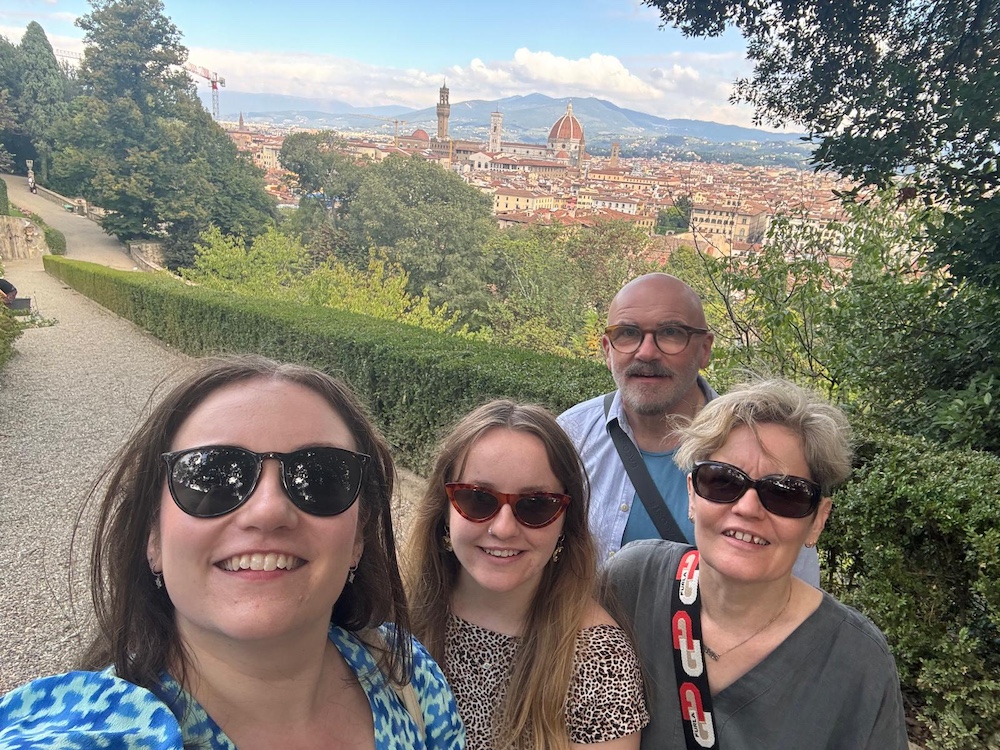
This is the third year I have been on a trip to Florence with my family (it is becoming our annual trip together) and so we have our favourite things to do and our own traditions. However, this year, we decided to do something different and take a cookery class together. I enjoy cookery classes when solo travelling, as they are a nice way to meet other people, but it is also a fun activity to do if you are travelling with others.
Why Choose Pasta Class Florence
We went to Pasta Class Florence, which I would highly recommend. There, we learned “the art of Nonna’s recipes” from Simone, who was a great teacher – he was engaging and attentive, with lots of helpful and practical tips that we will actually use. What is interesting about Pasta Class Florence is that the teachers are all professional chefs with experience in Michelin-starred kitchens – which is not always the case when it comes to cookery class teachers.
The class itself was a small group – there were six of us – which I think was a good size, because it meant we all got help from the teacher, and we also had the opportunity to get to know one another. It also made the class feel more down to earth and as if we were learning in someone’s home. At the end of the class, we enjoyed the dishes we made together as a group, which was a lovely experience. Wine was included (and very generously, is unlimited) – it felt like having a meal with friends.
What We Made
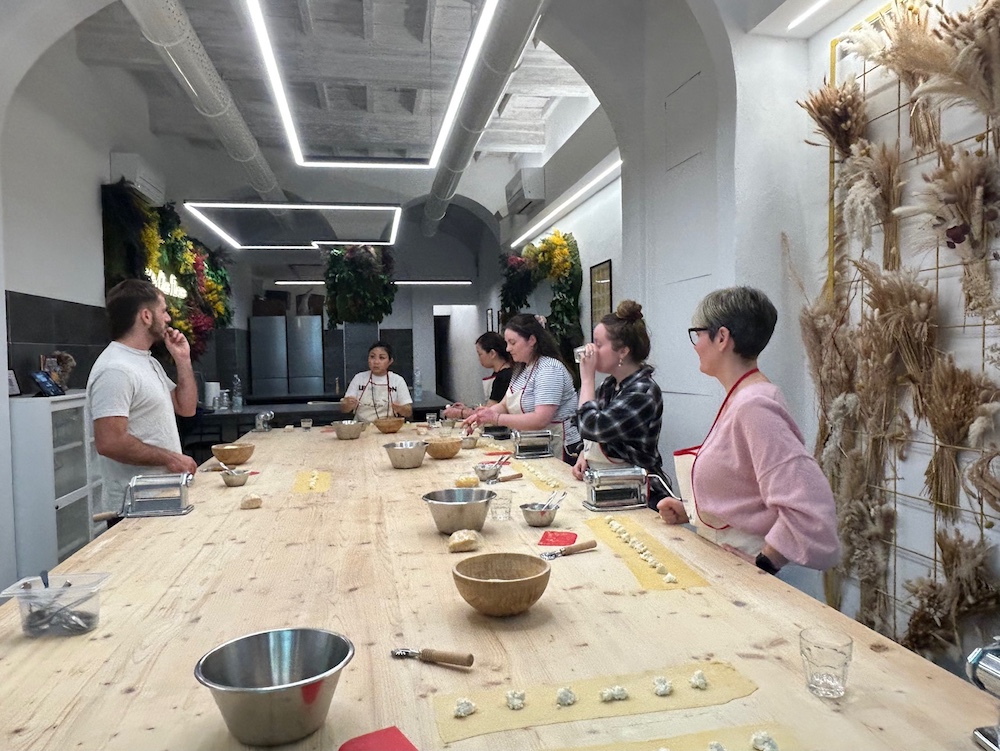
We learned how to make three different types of pasta: agnolotti, pappardelle, and spaghetti alla chitarra.
Agnolotti
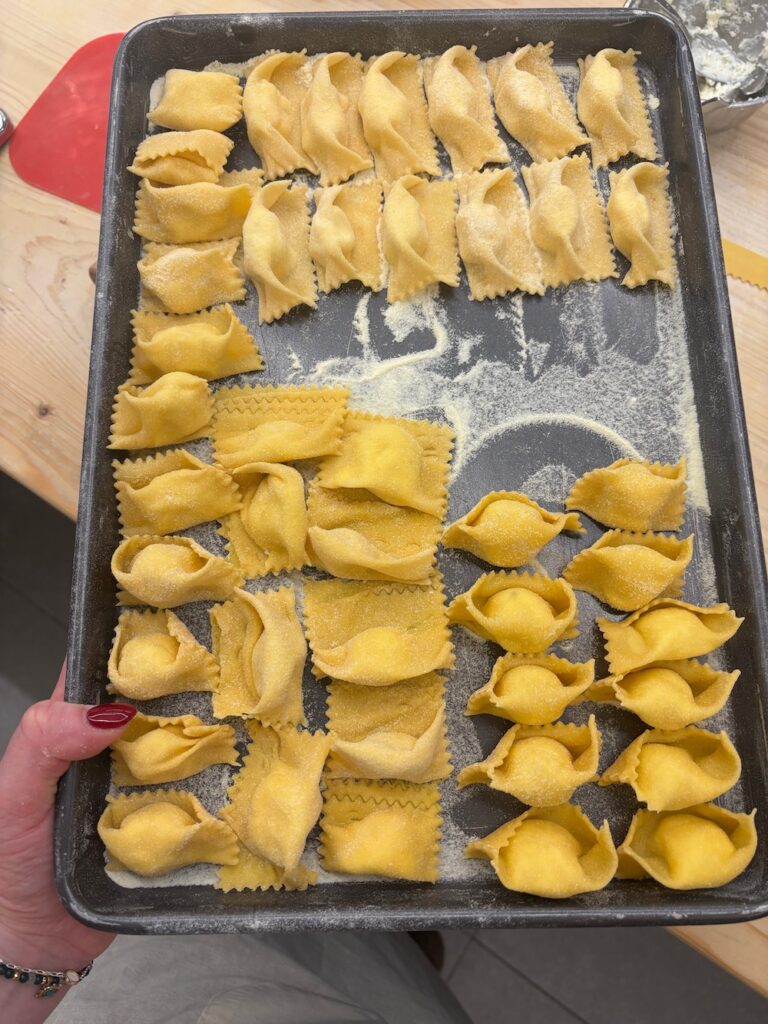
Agnolotti are a filled pasta from the Piemonte region of Italy – they are traditionally a square shape, like a pillow. It was interesting to see the different variations in shape and size that the group unintentionally made, whilst Simone made it look effortless! I hope with practice I can master the art of agnolotti.
The agnolotti were filled with ricotta, parmigiano, and lemon zest and served with a burro nocciola e salvia (brown butter and sage) sauce. We learned how to create a creamy sauce with no cream, by using the starch from the pasta (note: you will never find cream in authentic Italian pasta dishes). I loved the flavour combinations and the balance of flavours; the freshness of the filling was a nice contrast to the richness of the sauce.
Pappardelle
Pappardelle is the traditional pasta shape of Florence, and you will see it on many menus throughout the city. Its name derives from the verb “pappare” which means “to gobble” – and it is very easy to enjoy or “gobble up” the wide flat ribbons of this pasta with a delicious sauce.
It was very satisfying – and very simple – to make this pasta shape using the pasta machine to roll out the dough and then cut it by hand with a sharp knife.
The ragù was made with osso buco (veal shanks). Ragù and osso buco are some of my favourite comforting dishes to make – especially in the colder winter months – but somehow I had not considered making ragù using osso buco before. The bone marrow makes the sauce so rich and decadent, and the meat itself was so tender – it was perfection, served with lots of parmigiano.
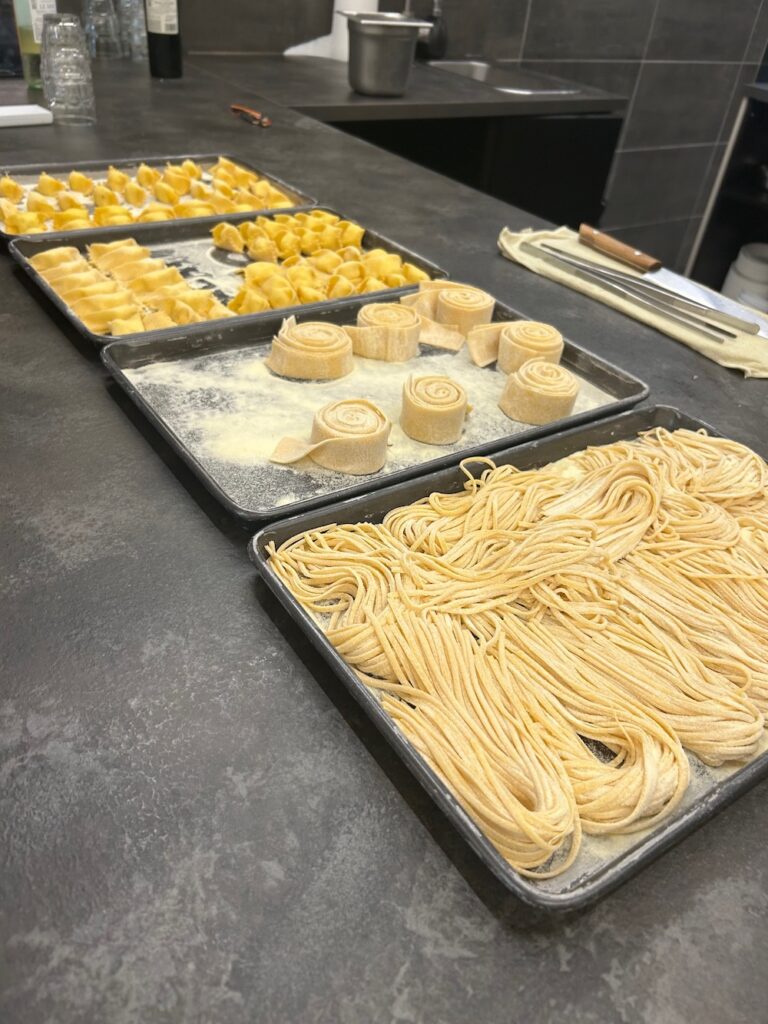
Spaghetti alla Chitarra
To make the spaghetti alla chitarra, we used the tool which gives this pasta its name – a wooden frame with wires, like a guitar (chitarra). When a sheet of pasta dough is rolled through this tool, it creates a squared shaped spaghetti. It was very fun to make!
The spaghetti alla chitarra was served with aglio e olio (garlic and olive oil) and pecorino, but Simone put an interesting twist on the aglio e olio by adding lime zest and dill. Those extra two ingredients were a great addition and created a more modern take on the classic aglio e olio.
Simone recommended adding crab meat or prawns to this dish, which I think would be lovely for the summer months (ideally in Italy with a crisp glass of white wine).
Choosing a Favourite Dish
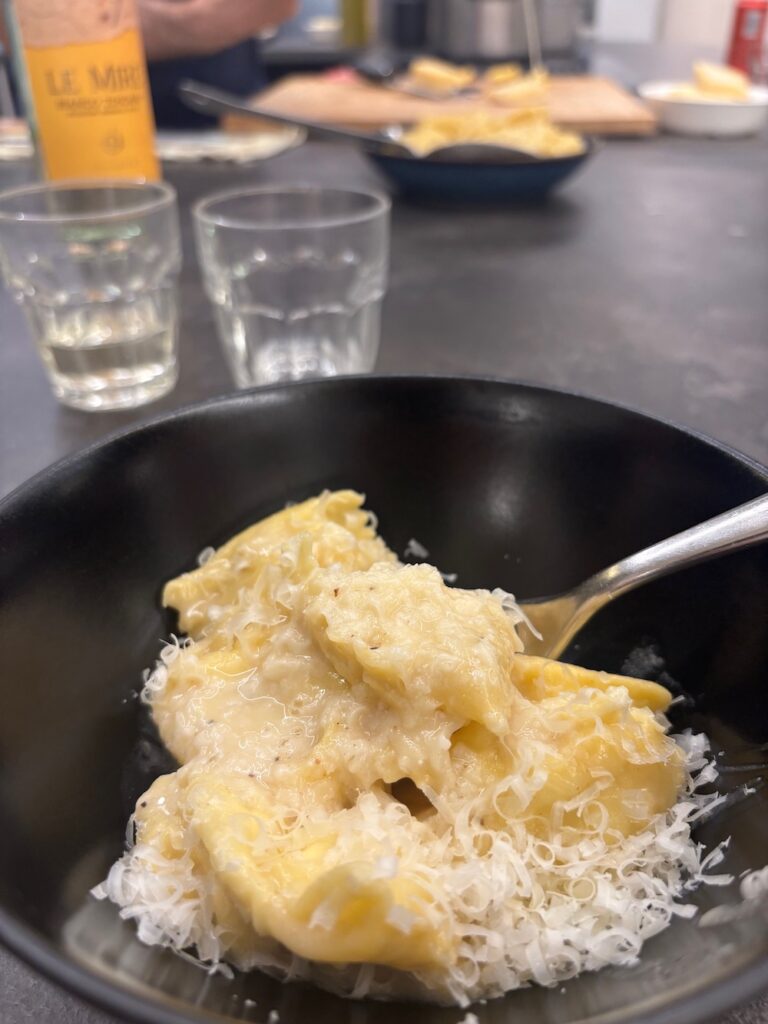
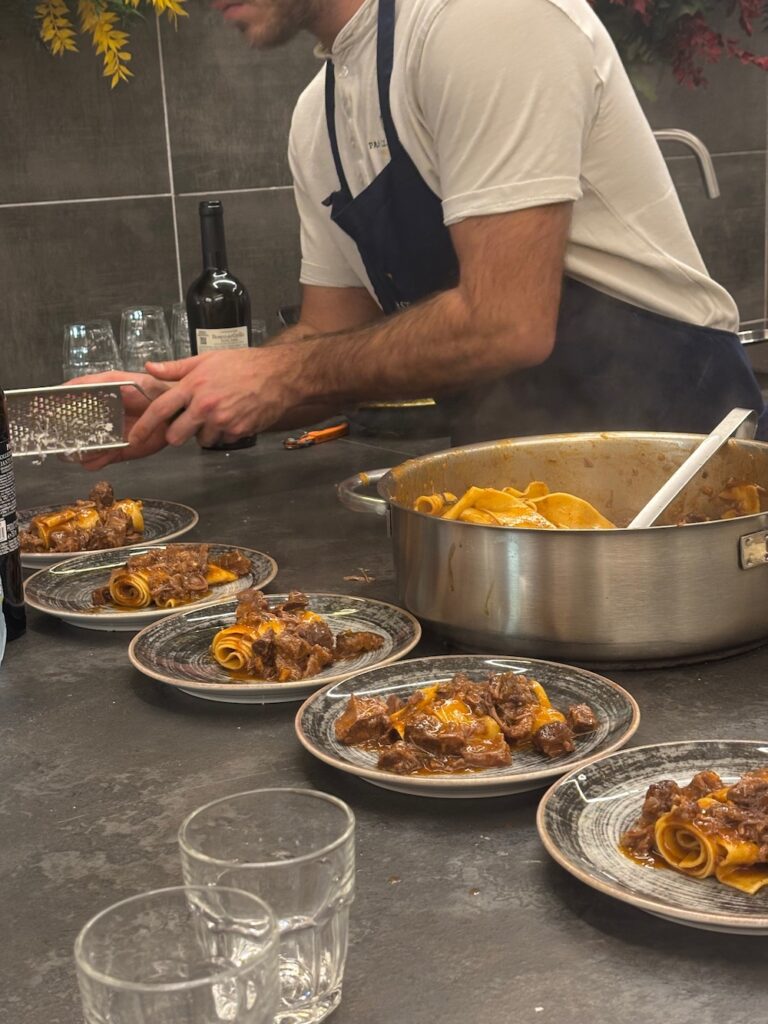
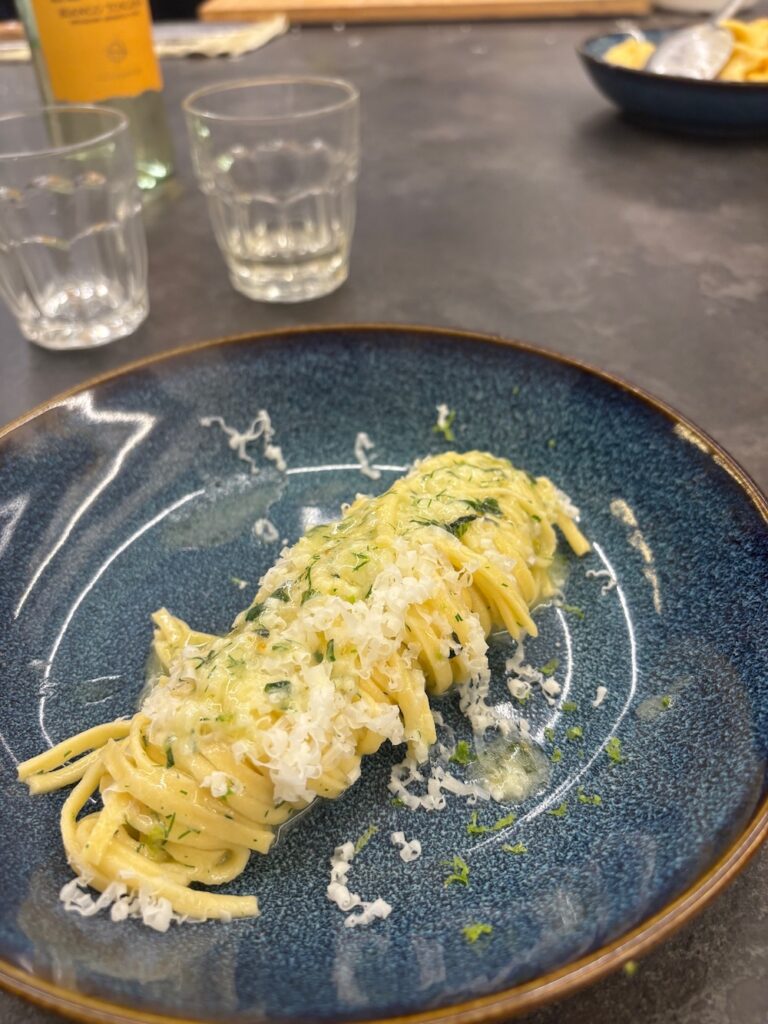
It was so difficult to choose a favourite dish from the three that we made; I liked that we made a variety, which would all be good for different occasions. The agnolotti are the most time consuming to make, so might be better for a special occasion or at the weekend; the spaghetti alla chitarra with a simple sauce like the aglio e olio could be a weeknight dinner with friends; and the pappardelle al ragù would be lovely for a Sunday meal with family.
I look forward to recreating all these dishes at home, and to enjoying them with friends and family. Pasta Class Florence’s tag line is “cook with love”, and, to me, that is the whole point of cooking and enjoying food together – it is a love language.
Like many of you, I have made pasta at home before, but this class taught me that it doesn’t have to take a long time, and it doesn’t have to be a complicated process or recipe – the beauty and art of pasta dishes like the ones we learned are that they are simple, classic, and made by nonnas across Italy for a reason.
Grazie mille a Pasta Class Florence!


For more information, visit: www.pastaclassflorence.com | @pastaclassflorence
Check out my Where to Eat in Florence, An Insider’s Guide from a previous trip.

